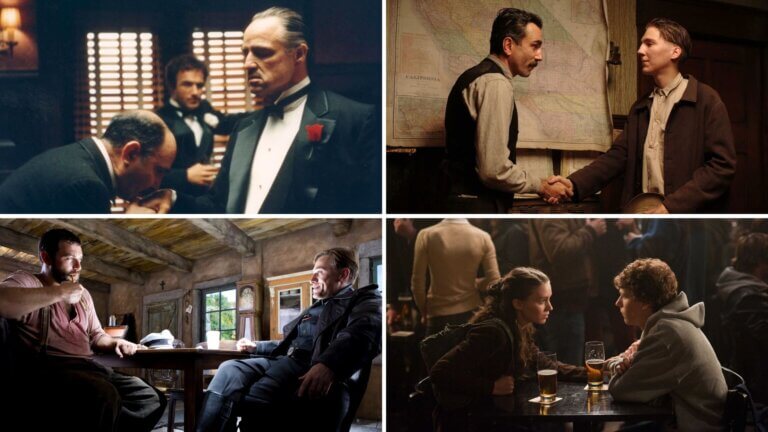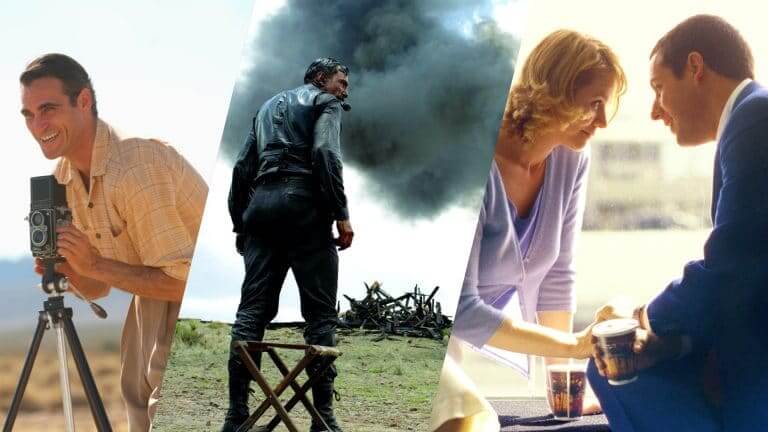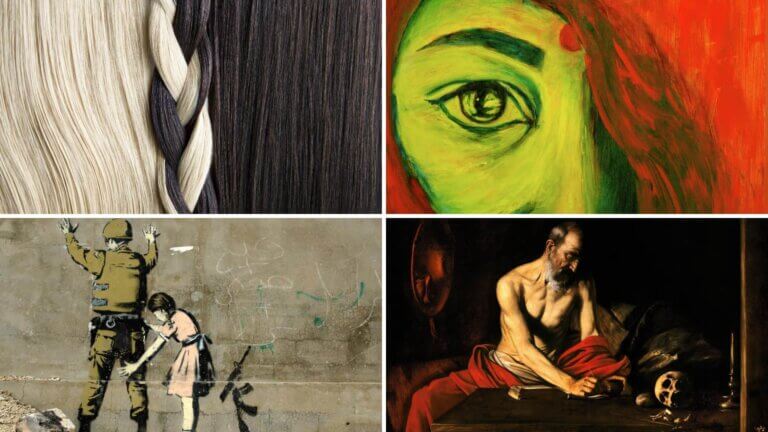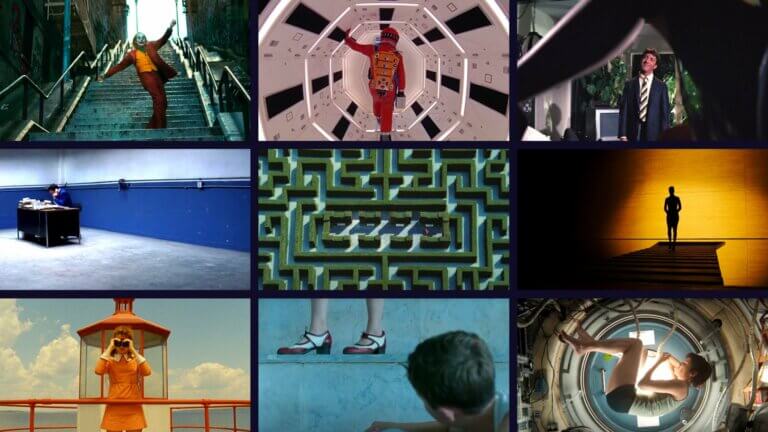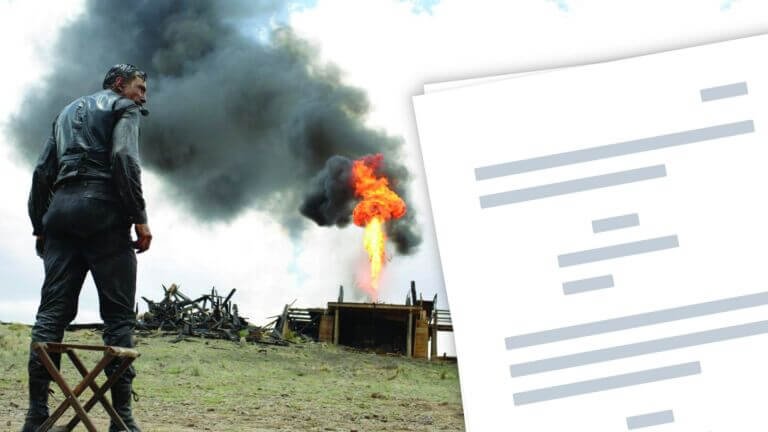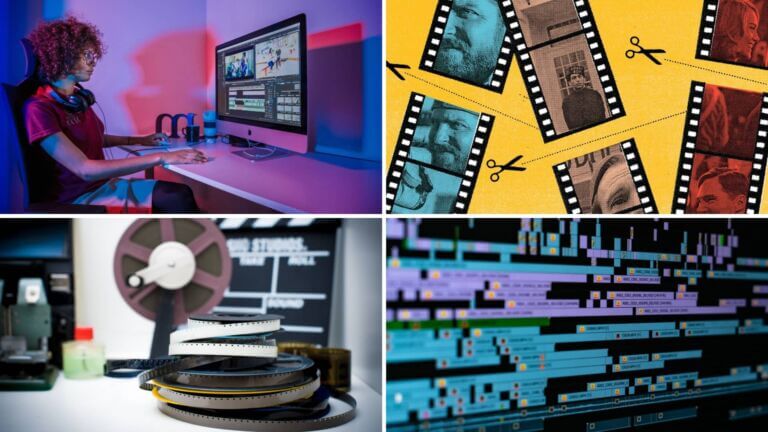Great performances, direction, cinematography, and even production design are all essential for creating an engaging dialogue scene. But one of the most important aspects of a great dialogue scene is effective editing. Editing can make or break a dialogue scene even if all of the other filmmaking elements fall into place. So how do you edit a dialogue scene? What editing techniques can be used so that a dialogue scene stays interesting and engaging? We’ll learn how to edit a dialogue scene and what techniques go into a great dialogue scene in this article. Continue reading How to Edit a Dialogue Scene…
When we watch a movie, the visuals that we see on the screen can either transport us to a different world or make us feel like we are simply watching a movie set. That is where production design comes in. Production design is an essential part of filmmaking, responsible for creating the look and feel of the film's world, ensuring that it feels authentic and believable. In this blog, we will take a closer look at the production design definition as well as what elements make for great production design in a film.Continue reading What is Production Design in Film —…
At just 23 years old, Paul Thomas Anderson broke into the filmmaking scene with his short film “Cigarettes and Coffee.” Four years later, Anderson released his acclaimed sophomore feature, Boogie Nights, which nabbed him his first Academy Award nomination for Best Original Screenplay. In the years since, Anderson has made widely revered films with some of the world's greatest actors, becoming a forerunner of American filmmaking. And now, the best Paul Thomas Anderson movies are ranked and debated incessantly. Each of the writer-director's works showcase at least one of the tools in his artistic arsenal, and some in fact showcase them…
Paul Thomas Anderson movies have evolved over the last two decades. His early films are chaotic and dramatic, built with extreme techniques and extreme performances. His later films have similar intensity, but it is often internal, more intellectual than physical. And his directing style has also become more mature and restrained.So far, P.T. Anderson only has eight feature films under his belt, but he has emerged as one of the most exciting American filmmakers. Let's take a trip through his filmography and find out what makes Paul Thomas Anderson movies so damn good.Continue reading Paul Thomas Anderson Movies and Directing…
When it comes to art, human beings are drawn to both harmonious and antagonistic compositions. While harmony in art can evoke pleasing emotions that viewers are drawn to, art with conflict can create greater intrigue and story. One of the most valuable techniques for creating the latter in art is contrast. What is contrast and what is its place in art?Contrast can be used in nearly every art form in numerous ways. But it’s important to understand the “Why?” behind its ubiquitous use in art. In this article, we’ll take a look at why artists and consumers of art alike…
Whether you are a painter, photographer, or filmmaker, composition is one of the foundational principles of any visual artwork. No matter what equipment you are using, composition and the principles of compositions are tools you always have at your disposal. So what is composition and why is it important to know? Understanding how to compose your frame or artwork will help you convey the emotion or story you want to your audience. Developing your eye for a great composition starts with learning the basic principles of it. So let’s dive in. Continue reading What is Composition — A Guide to Composition…
Over the last few years, Hollywood has tried to reinvent its definition of the “strong female protagonist” – but the result has been mixed. Although there has been a greater representation of empowered women in Hollywood films, there has also been a dissolution of nuanced characters. All of this begs the question: how do you effectively write a female protagonist? Well, it starts with all of the tenets of effective characterization – and by analyzing the best female protagonists of all-time. We’re going to break down the best female protagonists by looking at what makes them strong and weak. By the…
Auteur filmmaker Paul Thomas Anderson is an ideal example of a storyteller that has grown and matured with time and practice. His fifth feature film There Will Be Blood is a capstone to the restrained, yet powerful storytelling ability he has come to possess with time. It also remains his most acclaimed film. What makes There Will Be Blood so great? As in every film, it all begins with the screenplay. Let’s analyze the different components of the There Will Be Blood script and how they all work together to tell an incredible, engaging story.Continue reading There Will Be Blood…
If you ever took any type of film editing class or read a book on film editing, L cuts might have been among the first techniques you learned. This is because it is one of the most effective techniques at creating a natural flow of a film. Nearly every single movie you watch will have some sort of L cut within its edit. So what is an L cut? Let’s find out.Continue reading What is an L Cut in Film — Editing Transitions Explained
Rhythm in art is often synonymous with music. Tempo, measures, and beat are critical to captivating listeners and building a great song. Rhythm in film editing works in the same way. The audience's engagement is largely dependent on the pacing of a film. Too slow is boring and too fast makes it hard to connect to the characters and narrative overall. Pacing is created from rhythm and the rhythm in a film is created by the editor. So, how does an editor control the rhythm of a film? Let’s explore the role of a film editor and the dimensions of…
